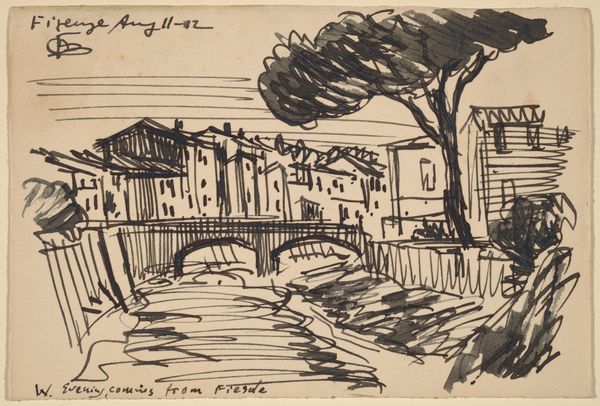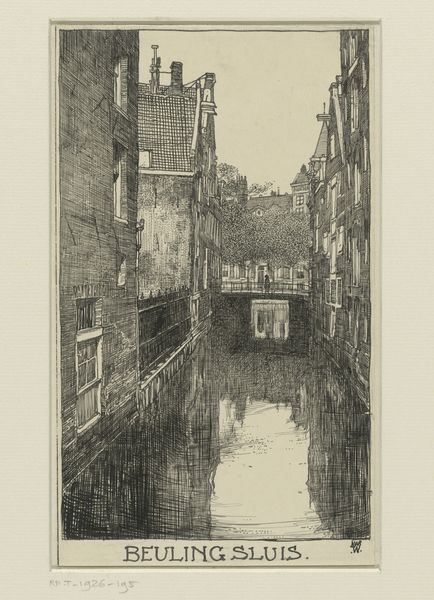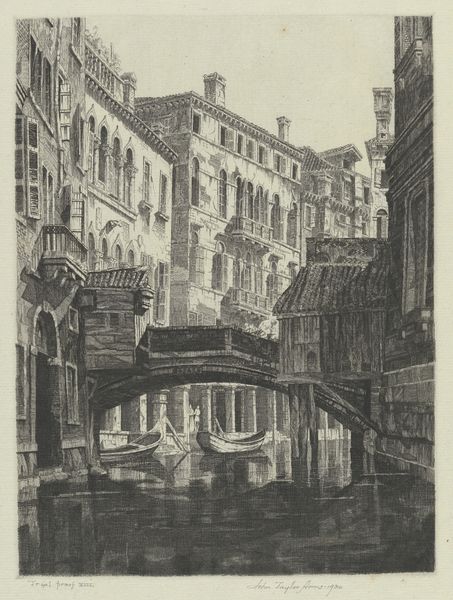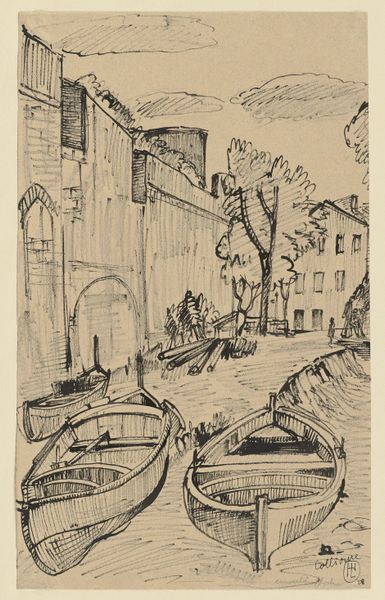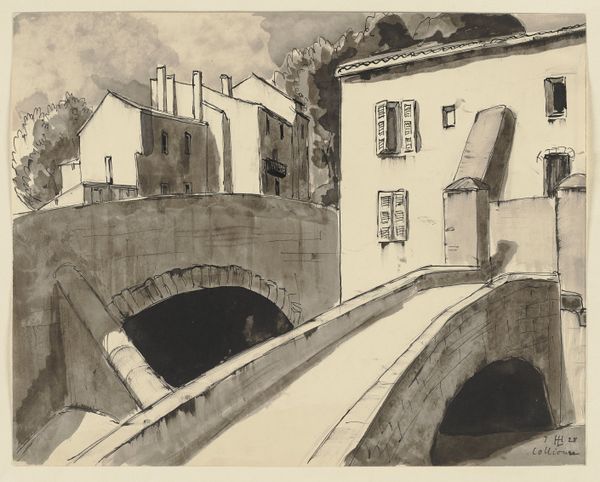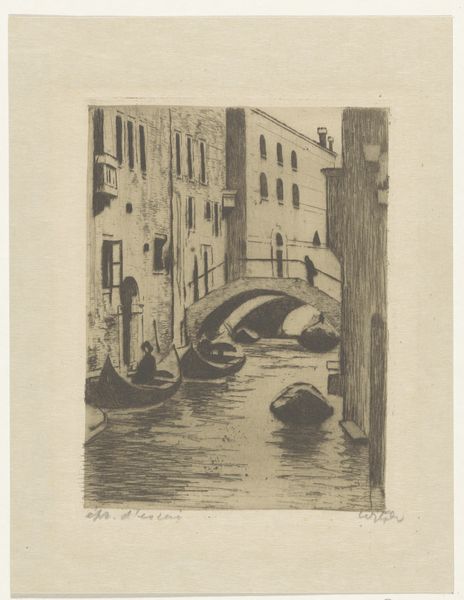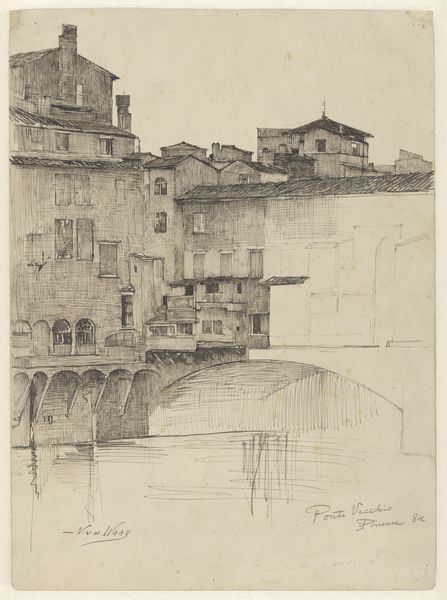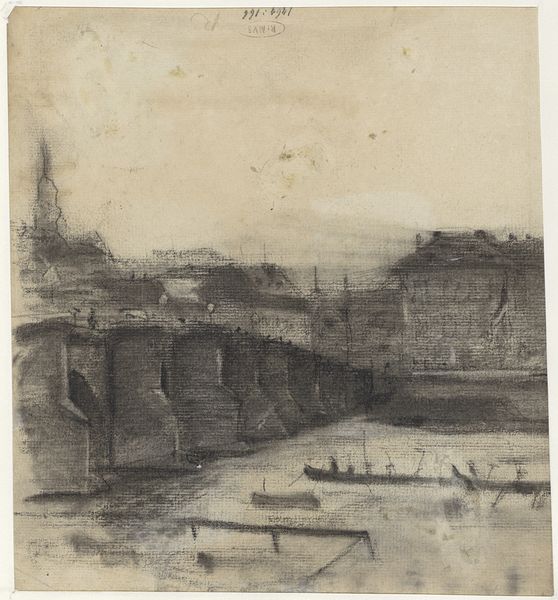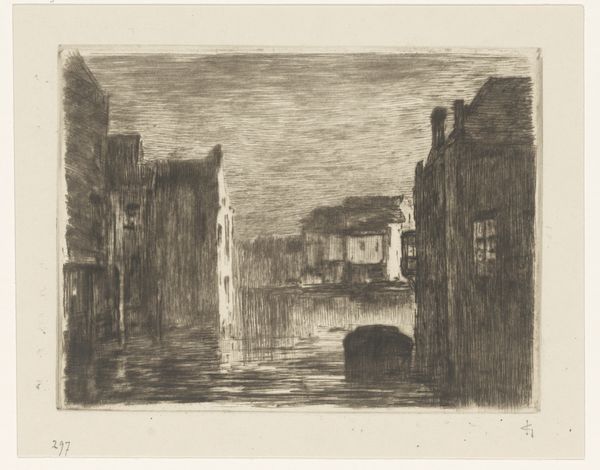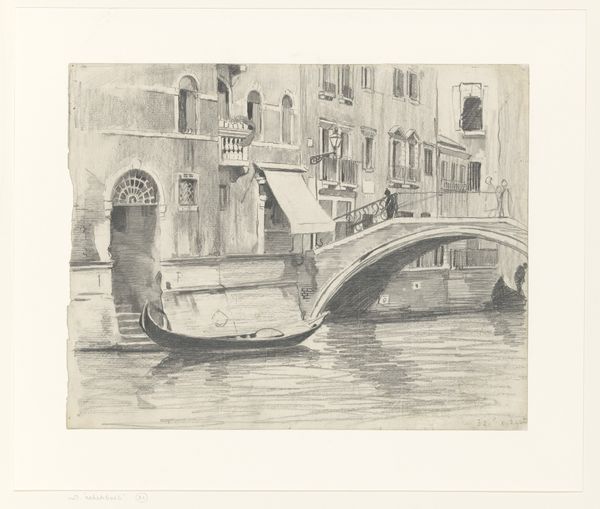
drawing, paper, ink, graphite, pen
#
drawing
#
landscape
#
paper
#
ink
#
graphite
#
pen
#
cityscape
#
modernism
Copyright: Public Domain
Editor: Hermann Lismann's "Riomaggiore," created in 1931 using pen, ink, and graphite on paper, is a striking cityscape. I'm immediately struck by how the artist used such stark contrasts of light and shadow to almost monumentalize the humble buildings. What sociopolitical ideas do you think we can tease out from it? Curator: Good eye noticing those dramatic contrasts! I’m particularly interested in examining "Riomaggiore" through the lens of early 20th-century urbanization and its impact on coastal communities like this one. Think about it – what do these tightly packed buildings suggest about the social structures and economic realities of the people who lived here? Are we seeing a romantic portrayal, or something more complex? Editor: It’s almost claustrophobic. Those buildings seem stacked on top of each other, suggesting a real density of population and maybe limited resources? Curator: Exactly! And Lismann was painting during a time of immense political and economic upheaval in Europe. Consider how the rise of industrialization and tourism was changing these previously isolated areas. Could this drawing be interpreted as a commentary on those forces? Are there details that seem less about natural beauty, and more about human struggles? Editor: I notice the bridge, and the water almost looks like it’s consuming the town. Was Lismann suggesting something about the vulnerability of these communities to external pressures, or even environmental challenges? Curator: It’s quite possible. And by using such stark contrasts, is he forcing the viewer to confront uncomfortable truths about the human cost of progress? How do you think his stylistic choices, like the seemingly rushed, sketch-like quality of the drawing, contribute to this narrative? Editor: It definitely gives it a sense of urgency, like a fleeting moment captured before it disappears entirely. I hadn't thought about the connection to larger social issues before, but it definitely adds another layer of meaning to the work! Curator: Precisely! Art doesn't exist in a vacuum, and I'm glad to know you found it compelling and can start seeing it too. By examining the social context, we can truly start to find a whole different approach to its intention.
Comments
No comments
Be the first to comment and join the conversation on the ultimate creative platform.
